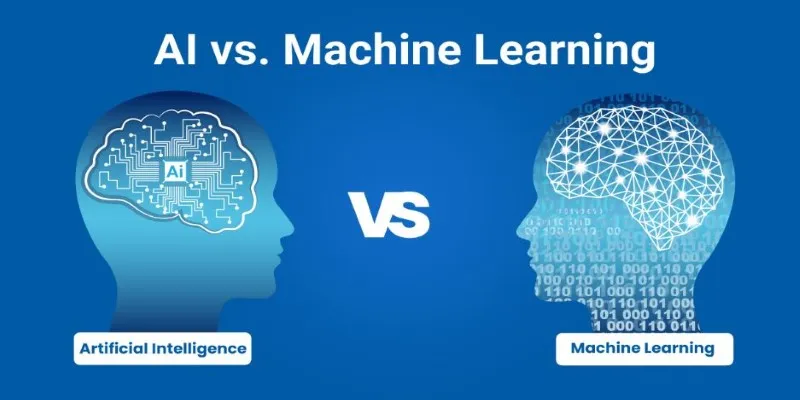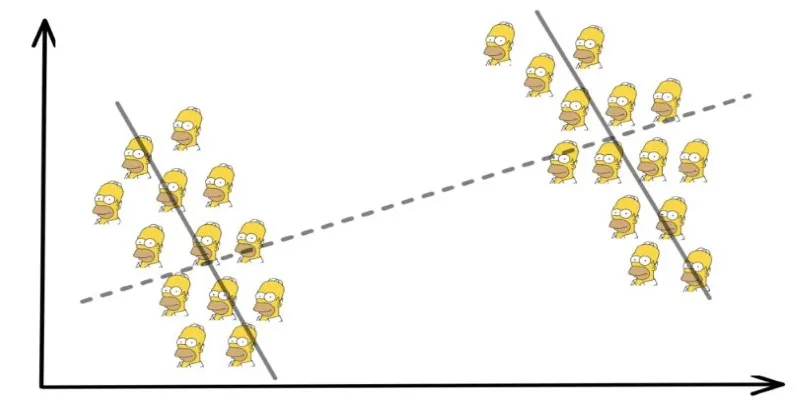Numbers sometimes tell a clear story—until you look closer and see a different narrative hiding underneath. This is the intriguing and often perplexing nature of Simpson’s Paradox. It occurs when trends in individual groups reverse or vanish once the data is combined. What seemed true initially suddenly isn’t.
This paradox appears in various fields, such as healthcare, hiring, and artificial intelligence, where patterns can be misleading if not carefully examined. It underscores the importance of context in data analysis. Without context, we risk drawing incorrect conclusions and making flawed decisions based on misleading insights that don’t reveal the complete story.
What Is Simpson’s Paradox?
Simpson’s Paradox is a statistical phenomenon where trends observed in separate groups disappear or reverse when the data is aggregated. Although the numbers are accurate, the grouping of data creates confusion. This paradox highlights how misleading insights can emerge when hidden variables aren’t considered in the overall analysis.
Consider a university with two departments—Engineering and Humanities. In both departments, women are admitted at a higher rate than men. That seems equitable. However, when overall data is combined, it surprisingly shows men with a higher admission rate. How is that possible? The explanation lies in the distribution of applications. If more women apply to the more competitive departments with lower acceptance rates, their total success rate will be lowered. So, even though they performed better within each group, the combined data tells a different—and misleading—story.
The core issue often involves a hidden factor—called a lurking variable—that distorts the big picture. These variables aren’t always obvious, but they can completely change how the data appears. If you rely solely on totals or averages without delving into the details, you risk drawing misleading insights that present a false picture of reality.
Why It Happens in AI and Machine Learning
In artificial intelligence and machine learning, models are designed to learn from patterns in data. However, when the data includes hidden subgroups or uneven distributions, Simpson’s Paradox can quietly emerge. If a model is trained on combined data without accounting for group-level differences, it may end up learning patterns that are misleading or incorrect.

Consider a healthcare example: imagine training a medical AI to predict patient recovery rates. You gather data from two hospitals—one with better facilities than the other. In both hospitals, patients who received a certain treatment had better outcomes. However, when the data from both hospitals is combined, it might appear as though the treatment isn’t effective at all. This reversed trend misleads the model and can result in misleading insights when making treatment recommendations.
The same problem arises in fairness. If you’re building a hiring algorithm and ignore differences between departments or job levels, the model might unfairly favor or reject certain groups. The algorithm isn’t inherently biased—the bias emerges from a flawed data structure.
This is why machine learning teams must go beyond surface-level patterns. Deep exploratory analysis and proper segmentation help uncover the real story hidden in the data. Without it, AI systems risk making decisions based on false signals.
Real-World Consequences of Misinterpreting Data
The dangers of Simpson’s Paradox extend well beyond theory. Misreading patterns in data can lead to flawed decisions in health, policy, business, and more. One of the most cited cases comes from a 1970s analysis of gender bias in UC Berkeley admissions. At first glance, data showed women were accepted at lower rates than men.
However, a closer examination revealed that women had applied more often to departments with higher rejection rates. Within most individual departments, women actually had slightly higher acceptance rates than men. The combined data told a misleading story.
In healthcare, overlooking subgroup details can be dangerous. A drug might appear effective overall, yet may harm specific age groups or genders. Without breaking down the data by these variables, such misleading insights go unnoticed, leading to poor medical decisions.
The same issue occurs in business. Companies may design products or campaigns based on average customer behavior, ignoring how different groups actually respond. One segment may love a product while another rejects it, but combined data conceals this.
Simpson’s Paradox teaches a crucial lesson: surface-level summaries can hide deeper truths. To avoid false conclusions, it’s vital to delve deeper into data, clearly separate groups, and think critically before making decisions that affect real people.
How to Avoid Misleading Insights from Simpson’s Paradox
The best way to steer clear of Simpson’s Paradox is to approach data analysis with care and curiosity. It starts with breaking your data into meaningful segments. Whether it’s by age, location, gender, department, or period, segmenting helps reveal patterns that might be obscured in the overall numbers.

Another important step is to check for hidden variables—factors that might not be obvious initially but have a significant influence on the outcome. These “lurking variables” can quietly shift results and flip conclusions without warning.
Always compare what the data reveals at the group level versus the overall insights. If the two stories don’t align, that’s a signal to investigate further. Visualization also plays a significant role. Charts, like grouped bar graphs or scatter plots, can expose inconsistencies that tables might hide.
Finally, don’t underestimate domain knowledge. Understanding the context behind the numbers can help you spot strange results before they lead to misleading insights.
Data analysis isn’t just about numbers—it’s about reasoning. And when the stakes are high, as they often are in AI, medicine, or policy, that kind of thinking becomes essential.
Conclusion
Simpson’s Paradox illustrates that data can be deceptive. A trend might seem clear in separate groups but completely reverse when those groups are combined. This can lead to misleading insights, especially in AI, healthcare, and business. To avoid being misled, it’s important to examine the data from multiple angles and consider hidden variables. Simple averages don’t always tell the full story. By delving deeper into the data, we can make better, more accurate decisions based on what’s truly happening.
 zfn9
zfn9

















